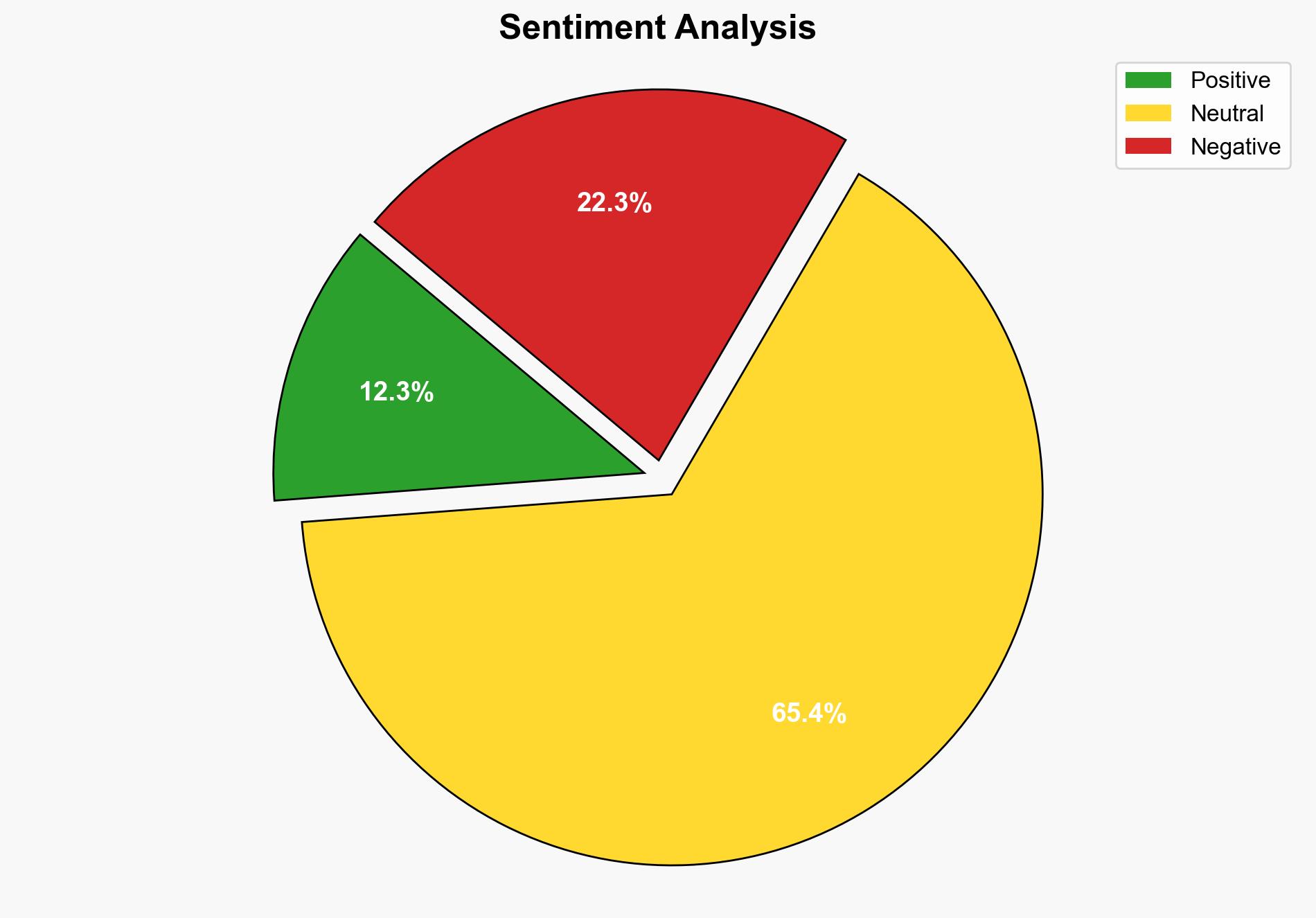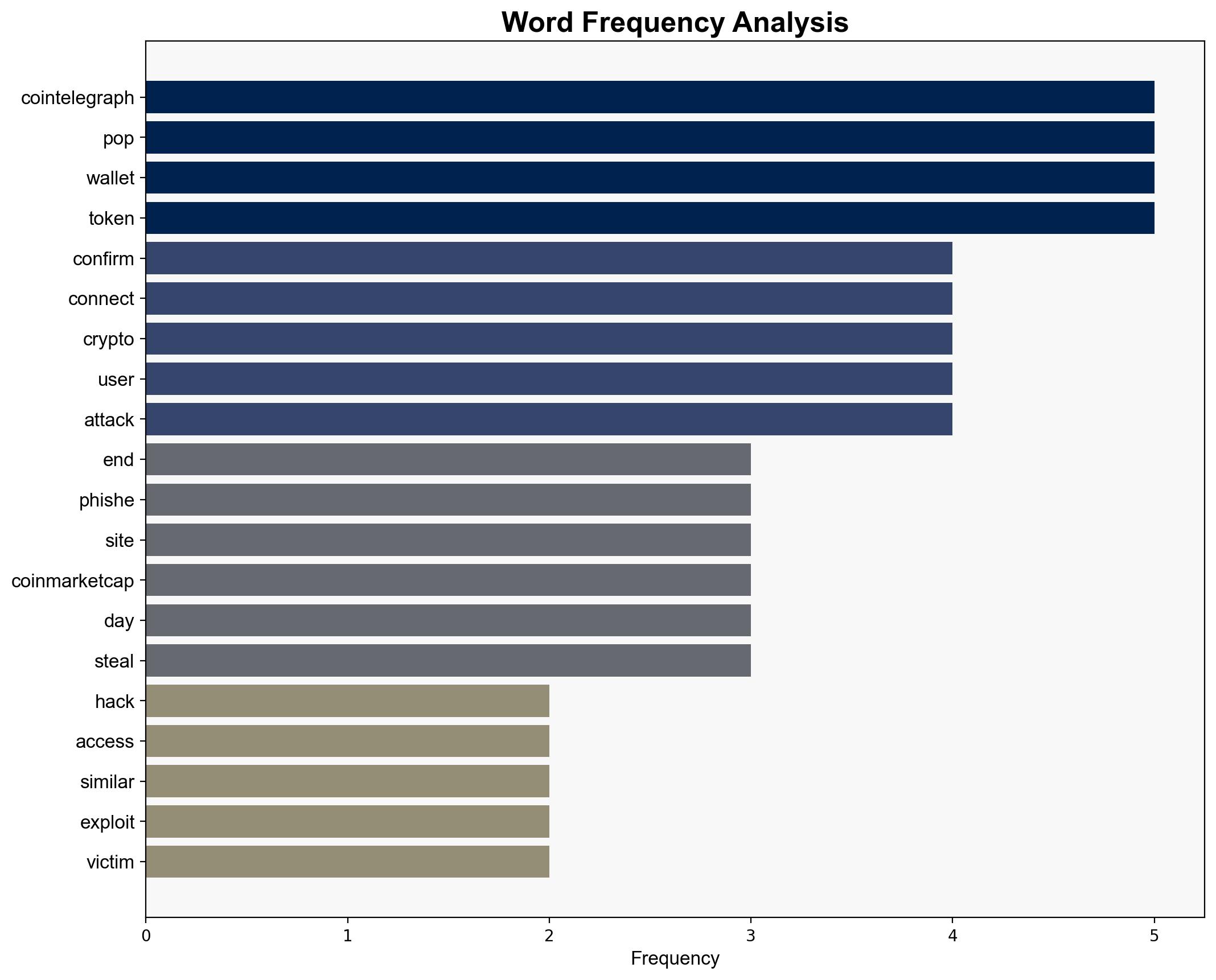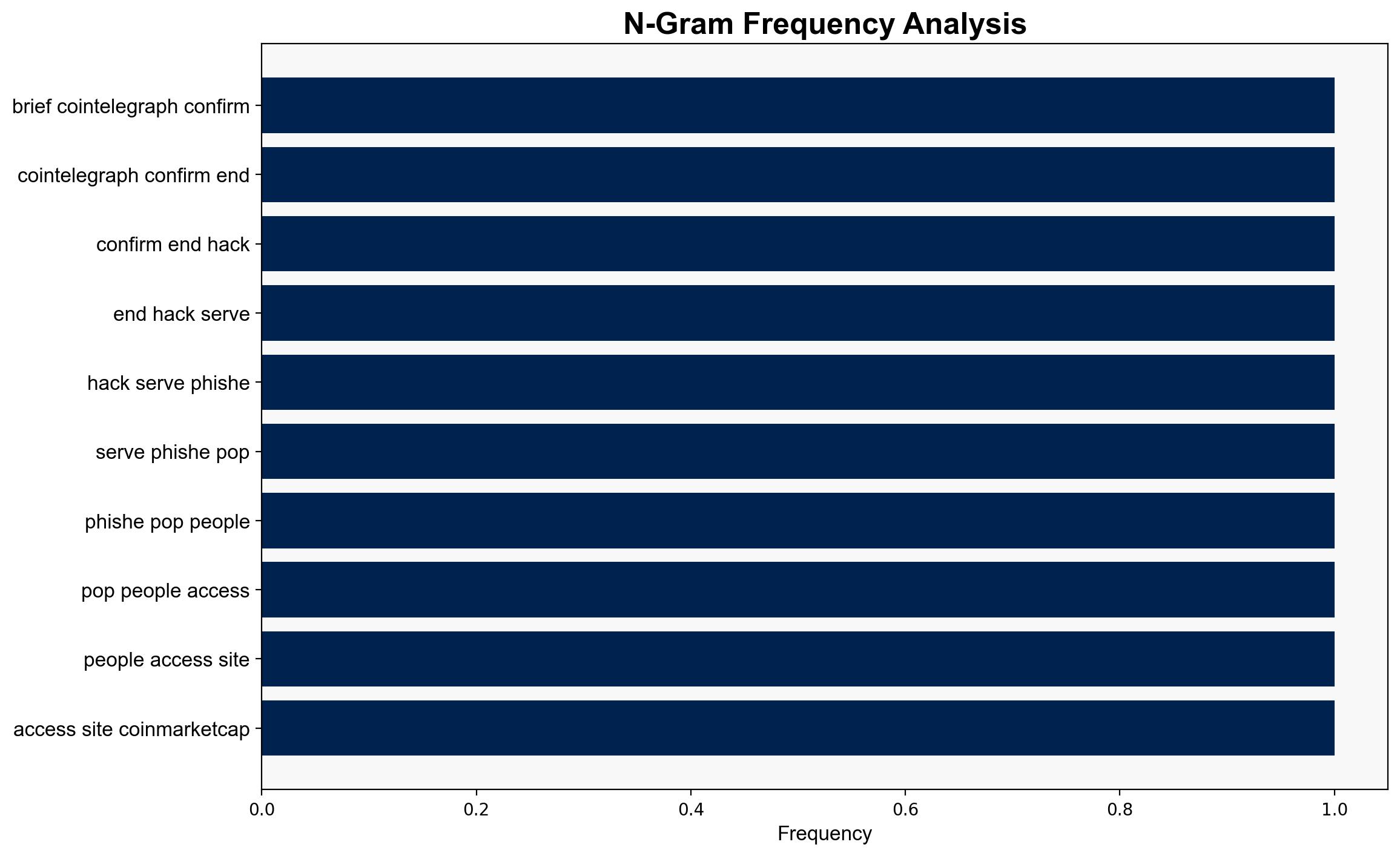Cointelegraph Website Hacked in Fake Airdrop Phishing Attack – Decrypt
Published on: 2025-06-23
Intelligence Report: Cointelegraph Website Hacked in Fake Airdrop Phishing Attack – Decrypt
1. BLUF (Bottom Line Up Front)
The Cointelegraph website was compromised in a phishing attack, exploiting users through fake airdrop promotions. This incident highlights vulnerabilities in crypto platforms, emphasizing the need for enhanced cybersecurity measures. Immediate actions include strengthening user authentication protocols and increasing public awareness to prevent future breaches.
2. Detailed Analysis
The following structured analytic techniques have been applied to ensure methodological consistency:
Adversarial Threat Simulation
The attack leveraged social engineering tactics, simulating legitimate airdrop events to deceive users into connecting their crypto wallets. This highlights the need for continuous adversarial threat simulations to identify potential vulnerabilities in user interfaces and authentication processes.
Indicators Development
Key indicators of compromise include unexpected pop-ups requesting wallet connections and the presence of malicious code injections. Monitoring for these anomalies can facilitate early detection of similar phishing schemes.
Bayesian Scenario Modeling
Bayesian modeling suggests a high probability of similar attacks targeting other crypto platforms, given the recent incident at CoinMarketCap. This probabilistic approach aids in predicting potential attack vectors and preparing defensive strategies.
3. Implications and Strategic Risks
The attack underscores a growing trend of phishing schemes targeting crypto platforms, potentially leading to significant financial losses and eroding trust in digital currencies. The systemic vulnerability lies in the user interface and authentication processes, which are susceptible to social engineering attacks. This trend could escalate, affecting broader economic stability and consumer confidence in digital financial systems.
4. Recommendations and Outlook
- Enhance user education on recognizing phishing attempts and secure wallet management practices.
- Implement multi-factor authentication and robust verification processes for wallet connections.
- Conduct regular security audits and threat simulations to identify and mitigate potential vulnerabilities.
- Scenario-based projections:
- Best Case: Strengthened security measures prevent future breaches, restoring user confidence.
- Worst Case: Continued attacks lead to widespread financial losses and regulatory scrutiny.
- Most Likely: Incremental improvements in security reduce the frequency of successful attacks.
5. Key Individuals and Entities
Sebastian Sinclair (mentioned in the context of reporting on the incident).
6. Thematic Tags
cybersecurity, phishing attacks, cryptocurrency security, digital finance, user authentication, threat detection





